Nestled beneath the shadow of Mount Vesuvius, lies the ancient city of Pompeii, frozen in time by the catastrophic eruption in 79 AD.
Pompeii: Living With the Volcano offers a captivating journey into the daily life of its inhabitants before disaster struck. Imagine strolling down the bustling streets, observing the vibrant frescoes adorning the walls of grand villas, and witnessing the vibrant marketplace where merchants bartered their wares.
But what secrets does this ancient city still hold? And how did its residents coexist with the looming presence of the mighty volcano?
Join us as we explore the intriguing world of Pompeii, uncovering its historical background, preservation efforts, and the cultural significance that continues to captivate visitors to this day.
Good To Know
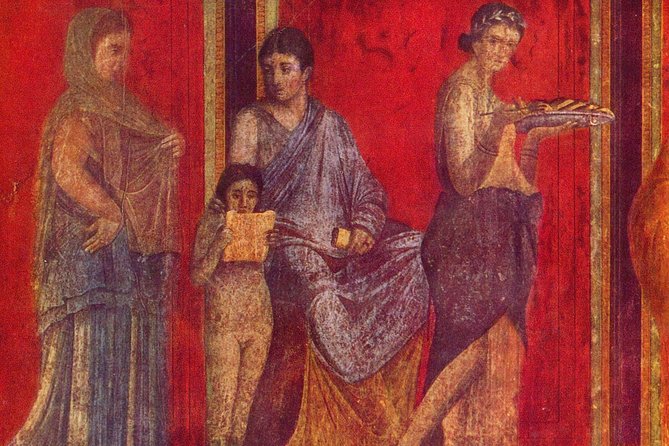
- Pompeii was a thriving Roman city near Naples, Italy, that was destroyed by the eruption of Mount Vesuvius in 79 AD.
- The eruption preserved the city under layers of ash, providing a unique glimpse into the power of nature.
- Pompeii had a social structure with wealthy citizens and lower classes engaged in manual labor.
- Pompeiians shared a common love for entertainment, with theaters and gladiatorial contests bringing people together.
Historical Background
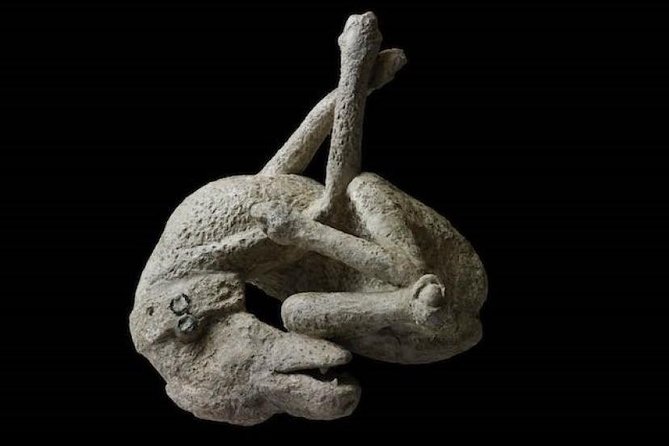
The historical background of Pompeii sets the stage for a captivating tale of a thriving ancient city abruptly halted by the devastating eruption of Mount Vesuvius in 79 AD.
Pompeii, located near modern-day Naples, Italy, was a bustling Roman city known for its prosperous economy, vibrant culture, and stunning architecture. However, its fate was sealed when Mount Vesuvius erupted, burying the city under layers of ash and preserving it for centuries to come.
The eruption not only brought destruction but also left behind a remarkable archaeological site that continues to captivate visitors today. Excavations in Pompeii have unearthed an extensive array of artifacts, including well-preserved buildings, frescoes, mosaics, and even the remains of its inhabitants.
These discoveries provide invaluable insights into the daily life, customs, and art of ancient Pompeii, allowing us to glimpse into the past and understand the profound impact of Pompeii’s eruption on this once-thriving city.
Find more activities and experiences we've covered in Pompeii.
Pompeii’s Volcanic Destruction
With the eruption of Mount Vesuvius in 79 AD, Pompeii experienced a catastrophic event that forever altered the landscape and destiny of this once-thriving Roman city. Pompeii’s geological features, including its proximity to the volcano, made it susceptible to volcanic eruptions.
The eruption of Mount Vesuvius unleashed a deadly combination of ash, pumice, and toxic gases that engulfed the city, burying it under more than 20 feet of volcanic debris. The sheer force of the eruption caused buildings to collapse, trapping and preserving the inhabitants in their final moments.
The volcanic destruction of Pompeii was so thorough that the city remained buried and forgotten for nearly 1700 years. Today, the preserved ruins offer a haunting glimpse into the devastating power of nature and the indelible mark it can leave on human history.
Daily Life in Pompeii
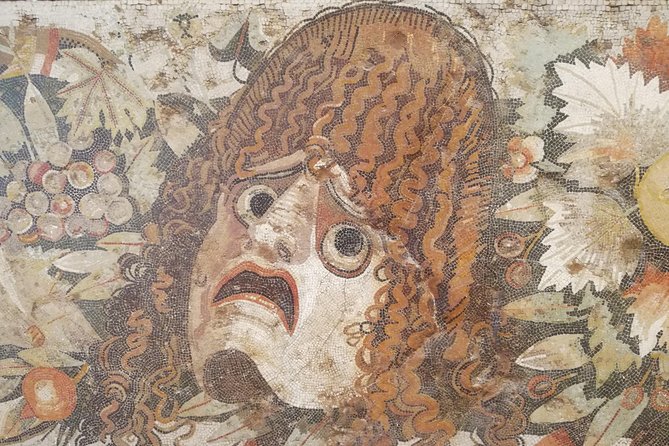
After witnessing the devastating volcanic destruction of Pompeii, it becomes intriguing to explore the daily life that once thrived within this ancient Roman city.
Pompeii was a bustling city with a vibrant population engaged in various daily routines. The social classes in Pompeii were clearly defined, with the elites enjoying a life of luxury and leisure, while the lower classes engaged in more labor-intensive activities.
Wealthy citizens would start their day with a luxurious breakfast, followed by visits to public baths and social gatherings. The lower classes, on the other hand, would begin their day with manual labor, working in fields or engaging in trades.
Despite the differences in social classes, the people of Pompeii shared a common love for entertainment, with the city boasting theaters, amphitheaters, and gladiatorial contests that brought people together for a spectacle.
Preservation and Excavation Efforts
Preservation and excavation efforts have been instrumental in uncovering the remarkable history and well-preserved artifacts of Pompeii, offering a fascinating glimpse into the daily lives of its inhabitants before the devastating eruption of Mount Vesuvius.
However, the preservation of Pompeii has faced numerous challenges over the years. The volcanic ash that buried the city acted as a natural preservative, but exposure to the elements, vandalism, and inadequate conservation practices have threatened the site’s integrity.
Despite these challenges, ongoing archaeological discoveries continue to shed light on the ancient city’s rich past. Excavations have revealed luxurious villas, public buildings, and even human remains frozen in time. Artifacts such as pottery, frescoes, and household items provide valuable insights into the daily routines, social structure, and cultural practices of the Pompeiians.
Through these preservation and excavation efforts, Pompeii remains an extraordinary testament to the power and resilience of human history.
Pompeii’s Cultural Significance
Pompeii’s cultural significance can be felt in every stone and artifact, as it offers a captivating window into the vibrant and sophisticated society that thrived before its tragic demise. The archaeological discoveries in Pompeii have had a profound impact on our understanding of ancient Roman life and have provided valuable insights into various aspects of their society.
One of the most remarkable aspects of Pompeii’s cultural significance is the preservation of everyday life. The city’s well-preserved buildings, streets, and even graffiti offer a glimpse into the daily routines, social hierarchies, and cultural practices of its inhabitants. Through the excavation of homes, shops, and public spaces, archaeologists have uncovered a wealth of information about Pompeii’s economy, politics, and religious beliefs.
To showcase the breadth of Pompeii’s cultural significance, let’s take a look at some of the key archaeological discoveries:
| Discovery | Significance |
|---|---|
| Villa of the Mysteries | Provides insights into the religious rituals and beliefs of the ancient Romans, particularly the cult of Dionysus. |
| House of the Faun | The largest and most luxurious residence in Pompeii, it showcases the wealth and opulence of the city’s elite. |
| Forum and Basilica | The political and economic center of Pompeii, revealing the city’s governance and commercial activities. |
| Pompeii Amphitheatre | A testament to the importance of entertainment and public spectacles in Roman society. |
| Frescoes and Mosaics | Elaborate wall paintings and intricate mosaic floors depict scenes from mythology, daily life, and historical events. |
These discoveries, among many others, have not only contributed to our knowledge of ancient Roman civilization but have also inspired artists, writers, and scholars throughout history. Pompeii’s cultural significance extends far beyond its tragic fate, leaving an indelible mark on the world’s understanding and appreciation of the past.
Visiting Pompeii Today
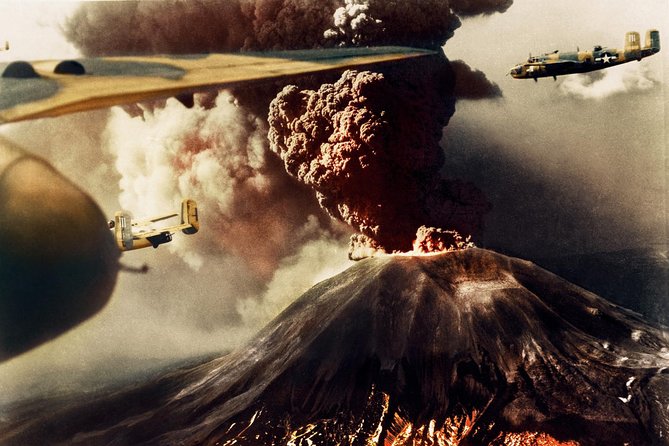
When visiting Pompeii today, travelers are transported back in time to experience the fascinating remnants of this ancient Roman city. Despite being buried for centuries under volcanic ash, Pompeii’s current state reveals a wealth of archaeological discoveries.
As you explore the streets, you can witness the remarkably preserved buildings, intricate mosaics, and colorful frescoes that provide insights into the daily life of its inhabitants. The Forum, once the heart of the city, still stands as a testament to its former grandeur. Walking through the amphitheater, you can almost hear the echoes of the crowd cheering on gladiatorial battles.
The hauntingly preserved bodies, frozen in their final moments, serve as a stark reminder of the catastrophic eruption of Mount Vesuvius in 79 AD.
A visit to Pompeii is an unforgettable journey into the past, an opportunity to take in the rich history of this ancient city.
Common Questions
What Was the Economic Status of Pompeii Before the Volcanic Eruption?
Pompeii’s prosperity before the volcanic eruption is evident in its well-planned urban layout and thriving economy. The city boasted a bustling marketplace, prosperous industries, and a well-developed infrastructure, showcasing its status as a flourishing commercial hub.
How Did the Ancient Romans in Pompeii Prepare for Natural Disasters Like Volcanic Eruptions?
Ancient Romans in Pompeii implemented various disaster management strategies to prepare for natural disasters like volcanic eruptions. These preparations included building structures with earthquake-resistant techniques, creating emergency evacuation plans, and establishing early warning systems to detect volcanic activity.
What Were the Main Sources of Income for the Inhabitants of Pompeii?
The main sources of income for the inhabitants of Pompeii were tourism and agriculture. With its rich fertile soil, the city thrived on agricultural activities such as farming, vineyards, and olive groves. Plus, Pompeii attracted numerous travelers, contributing to its economy.
How Did the Eruption of Mount Vesuvius Impact the Surrounding Areas Besides Pompeii?
The eruption of Mount Vesuvius had a significant volcanic impact on the surrounding areas, causing widespread destruction and devastation. The volcanic ash and pyroclastic flows engulfed nearby towns and villages, burying them under layers of debris and resulting in loss of life and infrastructure.
Are There Any Ongoing Preservation or Restoration Efforts in Pompeii?
Ongoing preservation efforts in Pompeii include cultural restoration projects aimed at conserving and protecting the ancient ruins. These efforts involve extensive research, excavation, and conservation techniques to ensure the long-term preservation and enjoyment of this historical site.
The Sum Up
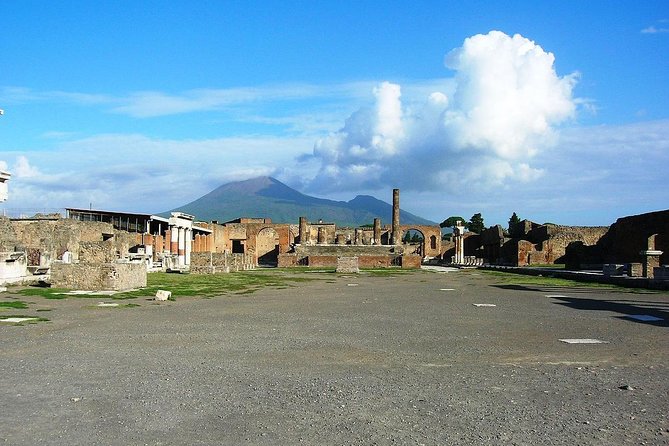
To sum it up, the immersive tour of Pompeii: Living With the Volcano offers a comprehensive exploration of the ancient city’s history and its unique relationship with Mount Vesuvius.
With a knowledgeable guide by your side, you will gain valuable insights into the daily life of the Pompeiians before the devastating eruption in 79 AD.
This experience is not only educational but also allows you to witness the remarkable preservation and excavation efforts that have made Pompeii a cultural treasure.
Don’t miss the opportunity to visit this captivating destination and explore the intriguing world of Pompeii.
More Tour Reviews in Pompeii
Looking for something different? Other Pompeii activities we've written about
- Aperitif in Pompeii View Capri
- Cesarine: Small group Pasta and Tiramisu class in Pompeii
- Private Pompeii Walking tour of the Latest Discoveries
- Pompeii for kids
- Discover the Ancient Ruins of Pompeii: Day Trip from Rome
- Pompei Skip The Line 2-Hours Guided Tour in English or Italian
- Mount Vesuvius from Pompeii with ticket & bus transport
- Golf Cart Tour Amalfi Coast
- Private Transfer from Naples to Rome
- Private Transfer from Naples to Pompei or Vice Versa
- Private Hands-on Italian Cooking Class in Pompeii with Sabrina
- Pompeii: Walking Tour with Archaeologist and Skip-the-Line Ticket
